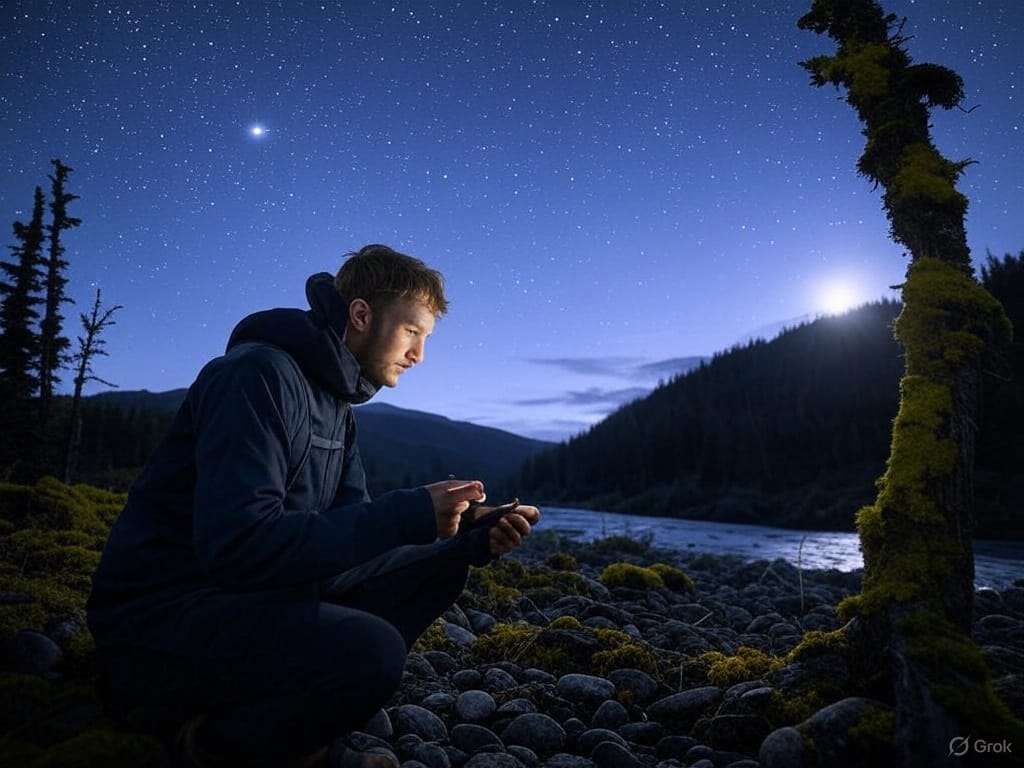Navigation Skills
Traditional navigation skills, using a compass, stars, and natural signs, empower adventurers to find their way confidently when modern GPS fails.

In an era of smartphones and GPS, navigation feels effortless—until batteries fail, signals drop, or devices break. In the wilderness, where emergencies strike without warning, traditional navigation skills can be a lifesaver. This guide explores using a compass, reading the stars, and interpreting natural signs to navigate confidently in any environment. Whether hiking, camping, or surviving an unexpected crisis, these timeless techniques connect you to the world and ensure you’re never truly lost.
Why Traditional Navigation Matters
GPS is powerful but fragile, vulnerable to dead batteries or lost signals. Traditional methods—relying on compasses, stars, and nature—are always available, requiring only knowledge and practice. These skills empower you to stay calm, solve problems, and deepen your connection to the environment, turning a potential crisis into a solvable challenge.
Mastering the Compass: Your Reliable Guide
A compass is a simple, dependable tool that aligns with Earth’s magnetic field, working anywhere without power. Here’s how to use it effectively. For a visual, consult a compass guide or diagram.
Compass Basics
A compass has a magnetized needle (red end pointing to magnetic north), a rotating bezel with degree markings, and a baseplate for stability. Learn these parts before heading out.
Orienting Your Compass
- Hold the compass flat at chest level.
- Turn your body until the needle aligns with the “N” (north) on the bezel.
- The compass now shows accurate directions: north ahead, east right, south behind, west left.
Taking a Bearing
- Point the direction-of-travel arrow (on the baseplate) at your target (e.g., a peak).
- Rotate the bezel until the needle aligns with north.
- Read the degree where the arrow meets the bezel—this is your bearing.
- Walk in the arrow’s direction, checking the needle stays aligned with north.
Adjusting for Magnetic Declination
Magnetic north differs from true north (the North Pole) by an angle called magnetic declination, which varies by location. Check your area’s declination online or on a map (e.g., 10° east). Adjust your bearing by adding or subtracting this angle (e.g., for 90° bearing with 10° east declination, use 80°). Many compasses let you set declination manually. See a declination chart for your region.
Map and Compass Navigation
Pairing a compass with a topographic map boosts precision:
- Align the map’s north with the compass’s north.
- To travel to a map point, place the compass edge from your location to the destination.
- Rotate the bezel until its lines are parallel to the map’s north-south grid, with the needle pointing north.
- Follow the bearing shown by the direction-of-travel arrow.
- To find your position, take bearings to two landmarks, plot their intersection on the map. Refer to a topographic map guide for visuals.
Reading the Stars: Nature’s Nighttime Guide
When daylight fades, the stars guide you. Celestial navigation, used for centuries, remains reliable. Use a star chart for reference.
Northern Hemisphere: Finding the North Star
Locate the Big Dipper, a bright, ladle-shaped constellation. Draw a line from the two stars at the bowl’s outer edge (Merak to Dubhe) and extend it five times their distance to find Polaris, a moderately bright star in the Little Dipper. Facing Polaris is true north, with east right, west left, and south behind.
Southern Hemisphere: Using the Southern Cross
The Southern Cross (Crux), a compact cross-shaped constellation, points south. Extend a line from the top star (Gacrux) through the bottom (Acrux) about 4.5 times their distance to the celestial south pole. Drop a perpendicular to the horizon to estimate south.
Stars for Time and Direction
Stars move east to west as Earth rotates. Pick a star in your desired direction, but switch to a new one every 15–20 minutes as it shifts. To estimate time, note the Big Dipper’s rotation around Polaris like a clock hand, though this requires practice with seasonal patterns.
Interpreting Natural Signs: The Environment as Your Guide
When tools or stars aren’t available, nature offers clues. These are less precise but can keep you oriented.
Sun’s Path
The sun rises in the east and sets in the west. At noon, shadows point roughly north (Northern Hemisphere) or south (Southern Hemisphere). To find direction:
- Place a stick in the ground, mark its shadow’s tip.
- Wait 15 minutes, mark the new tip.
- The line between marks runs east-west (first mark is west). A perpendicular line points north-south.
Wind and Vegetation
Prevailing winds (e.g., east-to-west trade winds) shape trees or dunes—research your area’s patterns. In the Northern Hemisphere, moss often grows thicker on trees’ north side, and plants may lean south toward sunlight. Use these as secondary clues.
Terrain Features
Rivers often flow toward larger water bodies, and ridges may align with regional geography. Study your area’s terrain beforehand, but rely on these sparingly.
Practical Tips for Confidence
Build navigation skills before you need them:
- Practice Locally: In a park, practice compass bearings, map orientation, or star identification. Try navigating to a specific point using only a compass and map.
- Carry Backups: Pack a quality compass (with declination adjustment), topographic map, and offline star chart. A notebook for bearings and a headlamp are essential.
- Stay Calm: If lost, stop, breathe, and choose a method (compass, stars, or signs). Backtrack to a known point if unsure, and avoid guessing.
- Know Your Environment: Research your destination’s terrain, weather, and declination. Deserts offer clear skies; forests provide moss but block stars.
Embracing Navigation’s Art
Traditional navigation is both a survival skill and a way to connect with nature. A compass, the stars, or a tree’s moss fosters awareness and awe. These techniques build confidence and problem-solving, ensuring you’re prepared for any adventure.
Challenge
This weekend, grab a compass and map, head to a local park, and navigate to a landmark without GPS. Share your experience with a friend to inspire them. The wilderness awaits—find your way.





